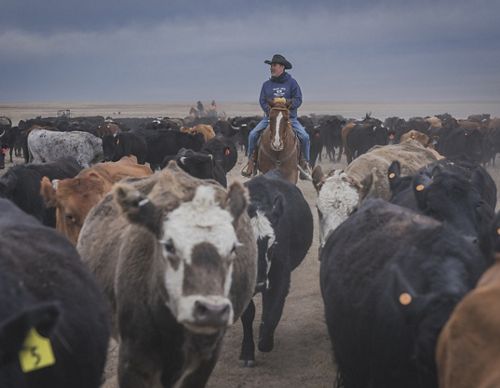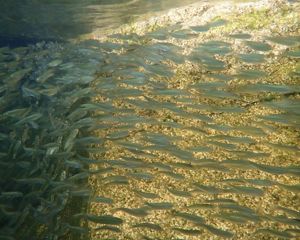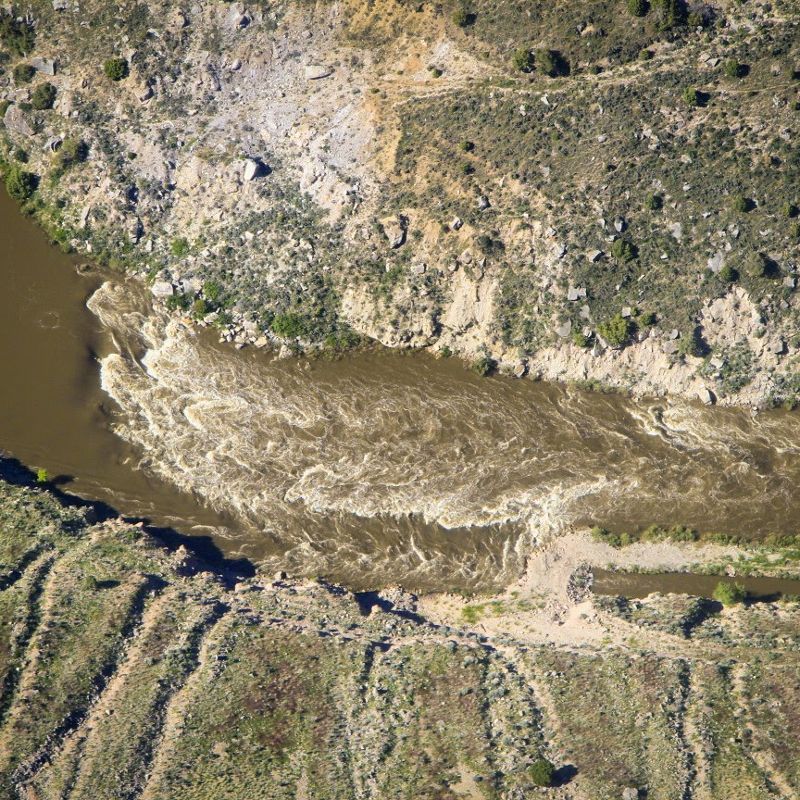
Going with the Flow: Conserving Water for Ranchers and a River
Funding from the Infrastructure Investment and Jobs Act is helping to tackle the West’s water crisis, one irrigation ditch at a time.
Rancher Mike Camblin is no stranger to change. When severe drought hit his ranch in Maybell, Colo., in 2020 and 2021, he found himself facing what he calls “one of the toughest decisions I ever made.”
His wife’s family had been running a cow-calf operation on the 30,000-acre ranch since 1917. The Camblins, like other local ranchers, depend on an 18-mile irrigation ditch that draws its water from the Yampa River. But during the drought, the ditch’s flows ran so low in late summer and early fall that there wasn’t enough water to grow the grass their cattle needed. The family decided to sell off the entire herd, save for the kids’ three show cows, which “we just didn’t have the heart to let go,” Camblin says.
For Camblin, who’s been the board president of the Maybell Irrigation District since 1999, this tragedy underscored the need to better manage his community’s water. But the ditch’s antiquated infrastructure had been making that a tough prospect for years. Maybell ranchers often found themselves using and losing too much water, imperiling both their livelihoods and the endangered fish that depend on the Yampa’s flow.
Now, a multimillion-dollar upgrade is helping to give the ditch—and by extension, the community of Maybell—a new lease on life. Funded in part by the Infrastructure Investments and Jobs Act, which was approved by Congress in 2021, this project shows what can happen when unlikely partners get together to better steward the West’s most precious resource.


When Camblin volunteered a quarter of a century ago to manage the Maybell ditch, he knew he was inheriting a headache. A slew of problems plagued the ditch, chief among them the century-old diversion, which channels water from the Yampa, and the decades-old headgate, which regulates how much water is diverted.
The structures are in a remote canyon accessible only by a lengthy drive and walk. Camblin often found himself traveling hours each day to adjust the headgate—that is, if he and a partner could even manage to wrestle the stubborn contraption open or shut.
The diversion was also a hazard for boaters and fish during times when the river ran low. As the last relatively free-flowing river in the Colorado River Basin, the Yampa is a popular rafting and kayaking destination. Its waters are home to several endangered fish, including razorback sucker and Colorado pikeminnow, a pink-finned fish that can grow to monstrous proportions.
The diversion’s gravelly push-up dam blocked fish movement and snagged rafts as they passed. The broken headgate prevented Camblin and the ditch’s other users from fully closing it during dry summer months, when irrigation is restricted to keep enough water in the Yampa to support fish.
“We were getting hit on all sides from people having trouble with our diversion structure,” Camblin says. But with only about $10,000 in the budget each year for ditch upgrades, anything more than stopgap fixes seemed to be out of the question.
Quote: Mike Camblin
We were getting hit on all sides from people having trouble with our diversion structure.
In 2017, at a regional water roundtable, Camblin spoke with Geoff Blakeslee, the then-director of The Nature Conservancy’s Yampa River project. At the time, Maybell ditch users had been installing structures to slow the water and make it easier to manage. But they needed $3,000 to complete the project. After Camblin brought this problem up at the roundtable, Blakeslee offered to have TNC help purchase supplies needed to complete the process.
It was the start of a productive relationship. TNC worked with the irrigation district to finance a ditch liner to reduce seepage and help stabilize the ditch’s banks, a project that was completed in 2021.
“The last piece of the puzzle, of course, was always the headgate,” Camblin says. It was a piece that would likely cost millions to fix. Camblin recalls sitting at a bar with Blakeslee and Nancy Smith, now the director of conservation for TNC’s Colorado River Program, to map out a way forward. “Over that beer,” he says, “we decided we could pull this project off.”
Over the next six years, the team diligently worked to combine many pots of funding from various state, federal and private sources to support the nearly $7 million effort. The lion’s share came in 2022, when the project received a $1.92 million grant from the Bureau of Reclamation’s WaterSMART program. The Maybell diversion is one of many projects funded by the Infrastructure Investment and Jobs Act, a massive federal program that funds infrastructure needs across the country.
Now that they had sufficient cash in hand, the Maybell Irrigation District and TNC could finally approach construction firms to begin repairing the diversion. Construction began in September 2023 and is now nearly complete, almost a year ahead of schedule.
“The cool thing about this project is that it doesn't just reconstruct the diversion and modernize the headgate,” says Jennifer Wellman, TNC’s freshwater project director for Northwest Colorado. The gates are now remotely operable, spelling far finer control of when and how much water is diverted, and eliminating ditch users’ daily slogs to adjust the headgate. The gates can easily be adjusted to meet water user needs during dry periods when irrigators are required to bypass flows to protect fish.
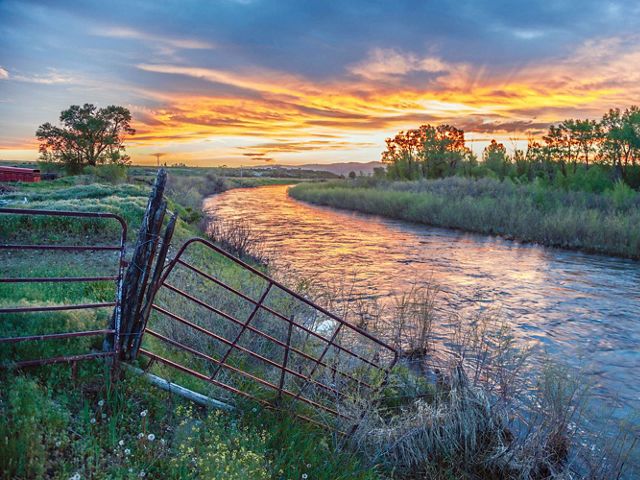
As for Camblin, the diversion has been paired with other big changes. He’s shifted his family’s ranch to a yearling production, fattening up several hundred “teenage” cattle at a time. His yearlings graze through their vast paddocks on a 13-month rotation, longer than anyone else in the community.
“Our neighbors think we're half crazy,” Camblin says. But the lengthy rest period helps the land recover—key in a water-stressed region. Running yearlings also means he can move them off the ranch quicker during periods of drought, saving the need to buy hay when grass supplies wither.
Fittingly, given the central importance of water in his life, one of Camblin’s favorite chores is opening the irrigation turnouts to his land in the morning. “I love to throw my dogs in the Jeep and just buzz around,” he says. “You’re in the field with the birds and the bees and the dogs.” And thanks to the remotely controlled headgate, he now has a little more time to enjoy the peaceful part of his day.
Take Action
Government action on conservation is at an all-time high. We need to keep that going. Tell Congress to protect conservation funding today.
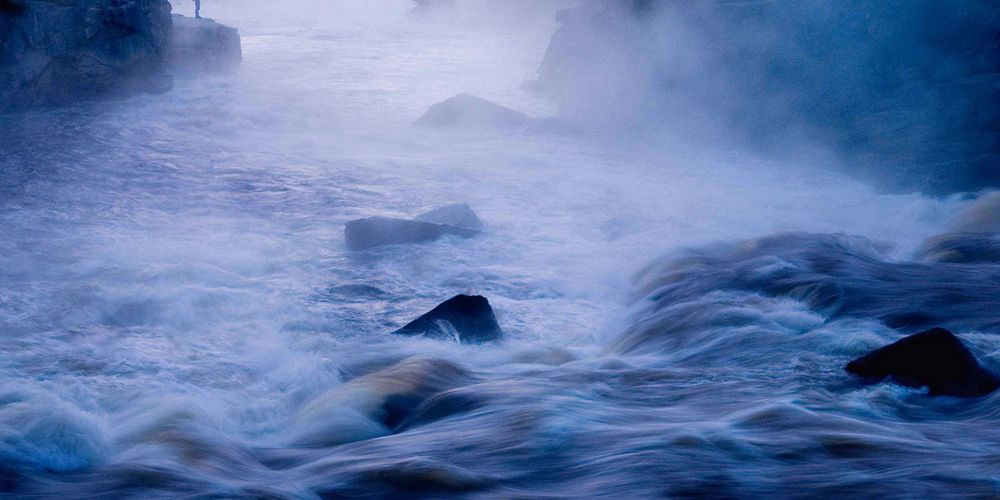

Sign up for Nature News
Get conservation stories, news and local opportunities from where you live.
